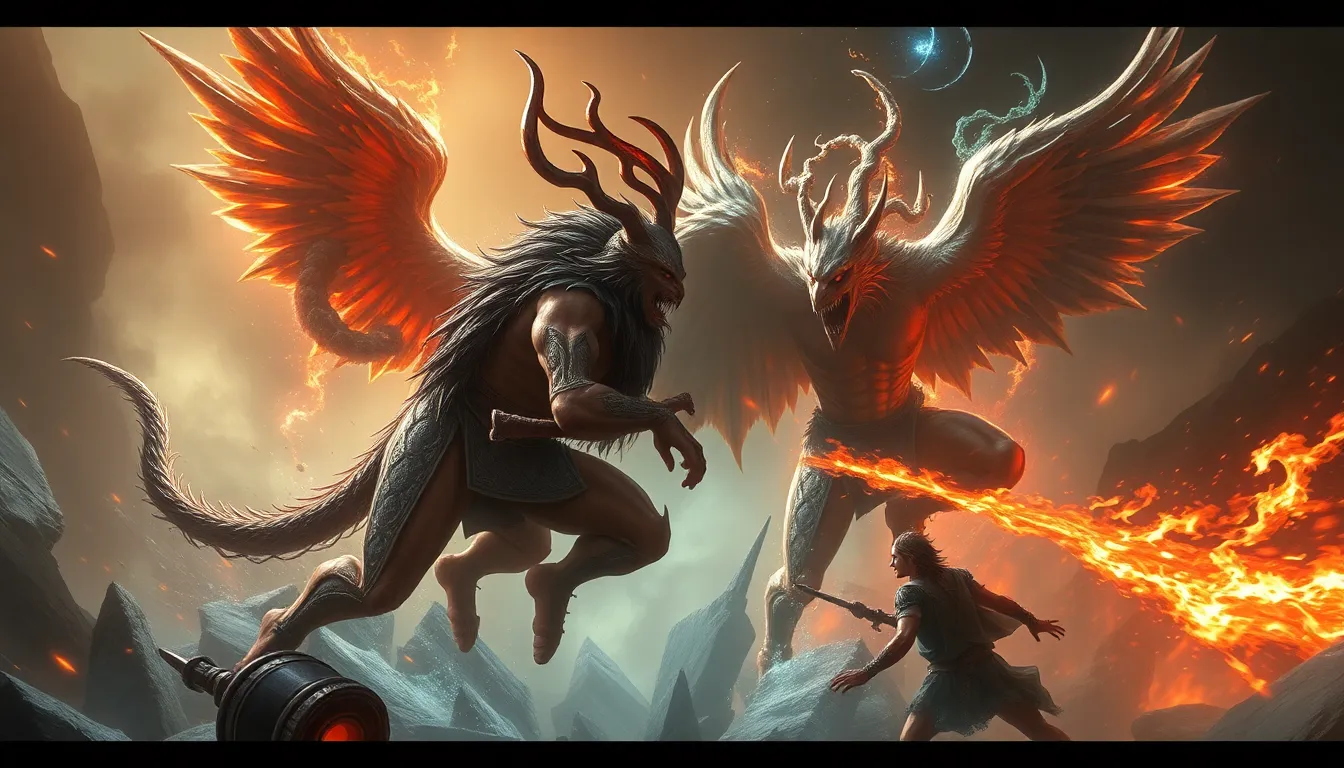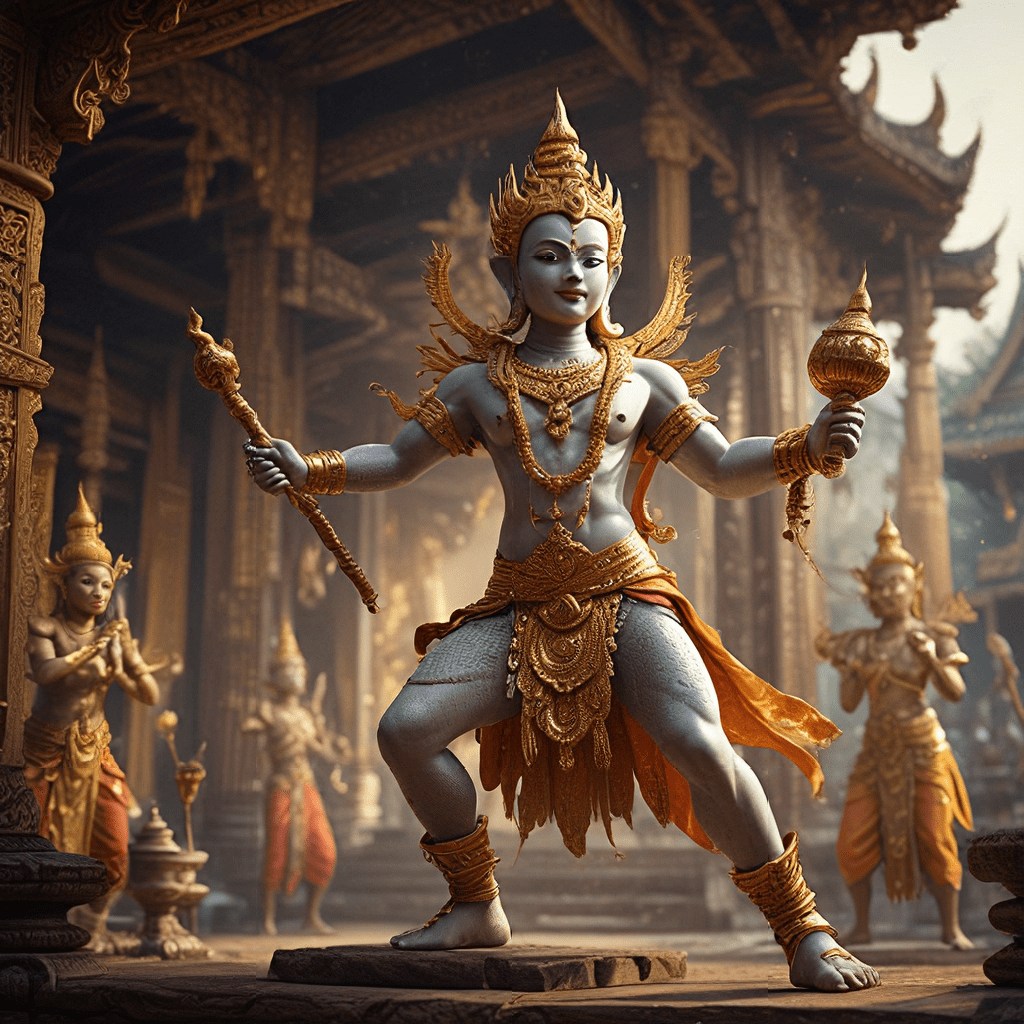The Underworld: Myths That Challenge Our Understanding of Life
Introduction: The Concept of the Underworld
The Underworld is a concept found in various cultures around the globe, representing a realm associated with the dead and the afterlife. This mysterious domain often embodies the fears, hopes, and beliefs of societies regarding mortality and existence beyond death. From the shadowy halls of Hades in Greek mythology to the serene fields of Elysium, the Underworld serves as a potent symbol of the unknown.
Understanding the significance of the Underworld in mythology allows us to explore profound questions about life and death. These myths challenge our perceptions, offering insights into how ancient peoples understood their existence and the inevitable fate that awaits all living beings.
The Underworld in Ancient Civilizations
In ancient civilizations, the Underworld was not merely a place of darkness and despair but a complex realm inhabited by deities and spirits, reflecting societal beliefs and practices.
- Egyptian Beliefs: In ancient Egypt, the Underworld, known as Duat, was overseen by Osiris, the god of the afterlife. The journey to Duat involved trials and judgment, where the heart of the deceased was weighed against the feather of Ma’at, symbolizing truth and justice.
- Greek Traditions: The Greeks viewed the Underworld as a place ruled by Hades, where souls would reside after death. It included various regions such as the Elysian Fields for the virtuous and Tartarus for the wicked, emphasizing a moral dimension to the afterlife.
- Mesopotamian Views: In Mesopotamian mythology, the Underworld, ruled by the goddess Ereshkigal, was a dreary place where the dead would live a shadowy existence, reflecting the harsh realities of life in the region.
The Underworld in these cultures played a crucial role in their societal structure, influencing religious practices, funerary rites, and the moral compass guiding their lives.
The Duality of Life and Death in Underworld Myths
Many myths depict the Underworld as a realm that embodies the duality of life and death. This connection often highlights themes of transformation and rebirth.
- Transformation: In several myths, the Underworld acts as a crucible where souls undergo transformation, emerging renewed or enlightened. For instance, in the myth of Orpheus, his descent symbolizes the journey of confronting one’s fears and the power of love.
- Reflection of the Living World: The Underworld often mirrors the living world. In many cultures, it is depicted as a shadow of life, where the experiences of the living are reflected in the existence of the dead.
This interplay between life and death encourages a deeper understanding of existence, suggesting that death is not merely an end but a continuation of the cycle of life.
Cultural Variations: The Underworld in Different Traditions
Across the globe, the concept of the Underworld varies significantly, shaped by cultural contexts and beliefs.
- Asian Mythologies: In Hinduism and Buddhism, the Underworld is often associated with the cycle of reincarnation. The belief in karma dictates the nature of one’s rebirth, highlighting a moral framework that transcends death.
- African Traditions: Many African cultures view the Underworld as a realm where ancestral spirits reside. The living maintain connections with these spirits, who provide guidance and wisdom.
- Indigenous American Beliefs: Indigenous tribes often view the Underworld as a place of spiritual significance, where the dead continue to influence the living through dreams and visions.
These diverse interpretations of the Underworld illustrate the unique ways cultures confront the mysteries of death and the afterlife.
The Psychological Interpretation of Underworld Myths
From a psychological perspective, the Underworld can be seen as a metaphor for the subconscious mind. Carl Jung’s theories on the collective unconscious suggest that these myths reflect universal themes and archetypes.
- Confronting Fears: The Underworld represents a space where individuals confront their deepest fears and anxieties about mortality and existence.
- Existential Questions: Myths surrounding the Underworld encourage introspection, prompting individuals to contemplate their life choices and the legacy they wish to leave behind.
These psychological interpretations help us understand our own fears and desires as we navigate the complexities of life and death.
The Hero’s Journey: Descent into the Underworld
The trope of the hero’s journey often involves a descent into the Underworld, symbolizing a transformative experience.
- Orpheus: His journey to retrieve Eurydice showcases the power of love and the pain of loss, emphasizing the emotional struggles faced in the face of death.
- Dante: In “The Divine Comedy,” Dante’s descent into Hell serves as an allegory for moral and spiritual reckoning, allowing for personal growth.
- Inanna: The Sumerian goddess Inanna’s journey to the Underworld highlights themes of sacrifice and rebirth, illustrating the cyclical nature of existence.
These narratives resonate deeply, illustrating how confronting the Underworld can lead to profound personal insights and transformation.
Modern Interpretations and Relevance of Underworld Myths
In contemporary society, the themes of the Underworld continue to resonate through literature, film, and art.
- Literature: Many modern novels explore characters’ journeys through personal “underworlds,” reflecting their inner struggles and growth.
- Film: Movies often depict the Underworld as a literal place or a metaphorical journey, illustrating the ongoing relevance of these ancient myths.
- Video Games: Many video games incorporate Underworld themes, allowing players to engage with mythological narratives and existential questions.
These modern interpretations underscore the timeless nature of Underworld myths and their ability to speak to contemporary existential concerns.
Ethical and Philosophical Implications of Underworld Myths
The Underworld myths carry significant ethical and philosophical implications, offering insights into morality and human nature.
- Morality and Justice: Many myths explore the consequences of one’s actions, emphasizing the importance of living a virtuous life to ensure a favorable afterlife.
- Redemption vs. Punishment: The dichotomy between eternal punishment and redemption in various myths prompts reflection on the nature of justice and forgiveness.
- Life Choices: These myths serve as cautionary tales, encouraging individuals to consider the impacts of their choices on their lives and the lives of others.
The Underworld and Its Role in Spiritual Practices
Finally, the Underworld holds significant relevance in various spiritual practices, representing a bridge between the living and the dead.
- Rituals and Ceremonies: Many cultures engage in rituals to honor the dead, facilitating communication with ancestral spirits and ensuring their guidance.
- Mystical Experiences: The Underworld is often a focal point in mystical experiences, where individuals seek enlightenment and understanding of the cycle of life and death.
- Spiritual Growth: Engaging with the concept of the Underworld allows individuals to confront their own mortality and seek deeper spiritual truths.
In conclusion, the Underworld is a rich and multifaceted concept that transcends simple definitions of life and death. Through exploring its myths, we gain valuable insights into the human experience, our fears, and our hopes for what lies beyond. The Underworld challenges us to confront the ultimate questions of existence, morality, and the profound connections we share with one another and the universe.


